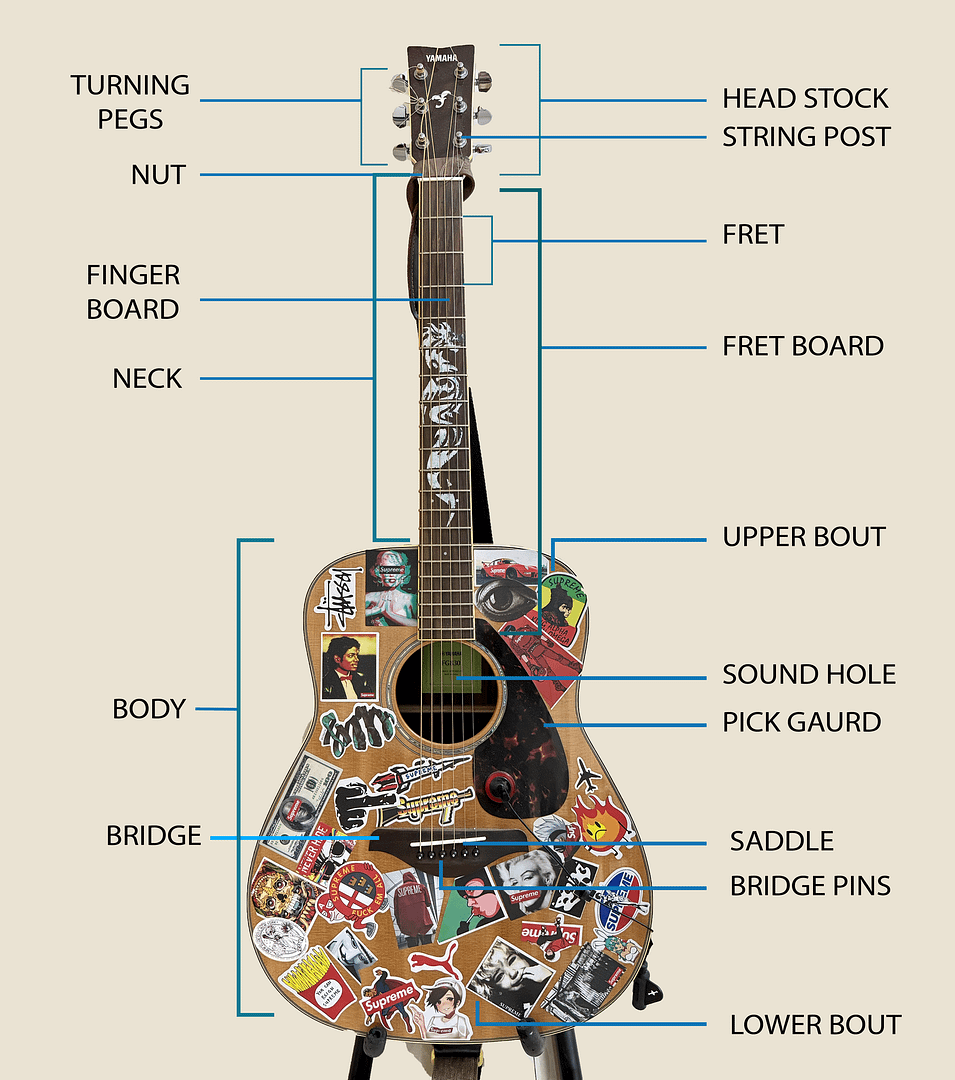Introduction
To start the learning process of acoustic guitar, at very first you should have a clear idea about different parts of the guitar. In general a standard acoustic guitar consists of following parts:

Before you take your guitar in your hand you should identify whether you are left handed or right handed. In general most of the guitar players are right handed but the basic learning technique of guitar follows the same for all. For our better understanding we can consider the main hand for strumming or plucking and the other hand for holding the strings.
So if you are right handed, the right hand should be always over the strumming portion and the left hand over the fret for holding strings. For pressing the strings 4 fingers- Index(1st), Middle(2nd), ring(3rd) and pinky(4th) are used which actually helps to create the melody. The right hand is used for strumming to make rhythm and plucking on a single string.
Strings: In a standard guitar there are a total 6 strings, however some guitars may have 12 strings. But as a basic learner we should start with a 6 strings guitar. To understand, we remember the string with the number. The thinnest string is 1st string which is the bottom most string from the player’s point of view and with the thickness it is 2nd, 3rd, 4th, 5th and 6th string. However, to mention the tuning of strings we will measure from thick to thin. In general the 6 strings are tuned on 6 different scales which will match with any piano tone note. So, the thickest string is tuned in ‘E’ followed by ‘A’ ‘D’ ‘G’ ‘B’ and ‘E’. so the 1st and 6th strings are tuned on the same scale ‘E’ but due to the difference of thickness it’s on a different octave.
What is Octave?
Octave is nothing but can be considered as the same tone with different Frequency at same interval. Easy example: if a tone is having 220 Hz frequency, the one octave above frequency will be 440Hz.
In a guitar the 6th String “E” is of 82.41Hz and the 1st String “E” is of 329.63. So the difference is above 2 octaves. Just for your curiosity you may have a question : what about the other strings?
|
String
|
Frequency
|
Note
|
|---|---|---|
|
1(E)
|
329.63hz
|
E4
|
|
2(B)
|
246.94Hz
|
B3
|
|
3(G)
|
196.00Hz
|
G3
|
|
4(D)
|
146.83Hz
|
D3
|
|
5(A)
|
110.00Hz
|
A
|
|
6(E)
|
82.41Hz
|
E2
|

